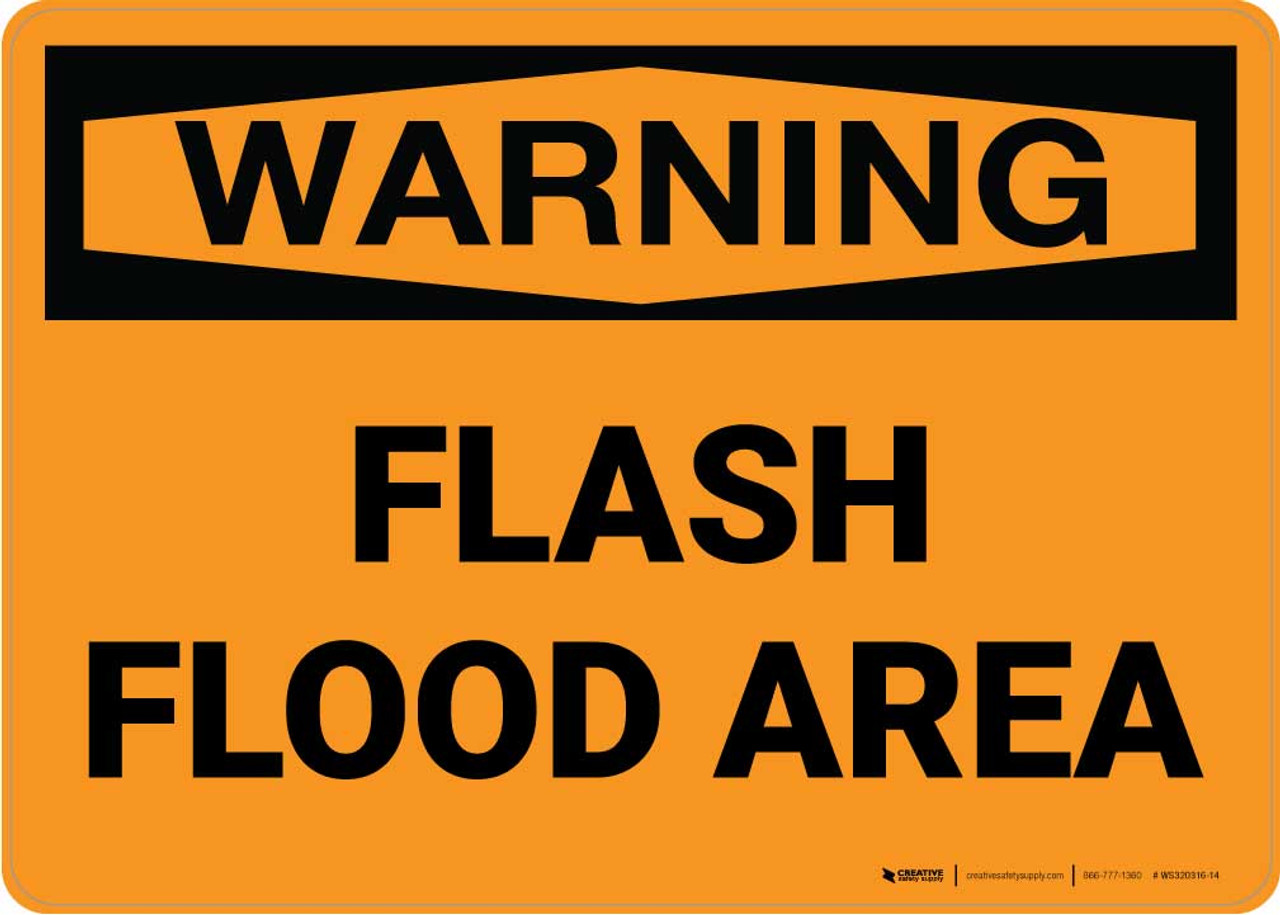What Is A Flash Flood? Understanding Flood Warnings And Alerts

Table of Contents
What Characterizes a Flash Flood?
A flash flood is a rapid, often unexpected, flood caused by heavy or excessive rainfall in a short period. Unlike regular floods, which develop gradually over hours or days, a flash flood’s speed and limited warning time make it particularly dangerous. The intense rainfall overwhelms natural drainage systems, quickly rising water levels and transforming normally harmless waterways into destructive forces. Several factors contribute to the formation of a flash flood.
Identifying Flash Flood Risk Factors
Geographical location plays a significant role in flash flood vulnerability. Areas prone to flash floods include:
- Mountainous regions: Steep slopes accelerate water runoff, leading to rapid increases in water levels in valleys and low-lying areas.
- Desert washes: These seemingly dry channels can fill with water incredibly quickly during intense rainfall.
- Urban areas with poor drainage: Impervious surfaces like concrete and asphalt prevent water absorption into the ground, contributing to surface runoff and increased flooding.
Seasonal factors also influence the risk. Flash floods are particularly common during:
- Monsoon season: Intense, concentrated rainfall is a hallmark of monsoons, creating ideal conditions for flash floods.
- Spring snowmelt: Rapid melting of snowpack, especially when combined with heavy rain, can overwhelm rivers and streams.
Additional risk factors include:
- Steep slopes: Accelerate water runoff.
- Impervious surfaces (concrete, asphalt): Prevent water absorption, increasing surface runoff.
- Deforestation: Removes natural barriers that slow water flow.
- Clogged drainage systems: Reduce the capacity of drainage infrastructure to handle increased rainfall.
Recognizing the Signs of an Impending Flash Flood
Recognizing the signs of an impending flash flood can significantly improve your chances of staying safe. Be vigilant and aware of your surroundings, particularly during periods of heavy rainfall.
Visual cues to watch for include:
- Rapidly rising water levels: A sudden and significant increase in the water level of streams, rivers, or other bodies of water is a major warning sign.
- Overflowing streams and rivers: Water exceeding the banks of a water body indicates a high risk of flooding.
- Debris flowing downstream: Increased debris flow suggests a rapid increase in water velocity.
Audible warnings can also be crucial:
- The sound of rushing water increasing in intensity indicates rising water levels and a potential flash flood.
Understanding Weather Reports and Warnings
Understanding weather reports and warnings is paramount. There's a critical difference between a watch and a warning:
- Watch: Conditions are favorable for a flash flood to develop. Stay informed and be prepared.
- Warning: A flash flood is imminent or occurring. Take immediate action to protect yourself and your property.
Access crucial weather information through:
- Weather apps: Download reliable weather apps for real-time updates.
- NOAA website: The National Oceanic and Atmospheric Administration (NOAA) provides comprehensive weather information.
- Local news: Local news stations often issue timely alerts and warnings.
Remember to:
- Check weather forecasts regularly, especially during periods of heavy rain.
- Understand the meaning of different warning levels (e.g., advisory, watch, warning).
- Know your local emergency broadcast system and how to receive alerts.
Safety Measures During and After a Flash Flood
Knowing how to react during and after a flash flood is vital for survival and minimizing damage.
Actions to Take During a Flash Flood Warning
If a flash flood warning is issued, act immediately:
- Immediately move to higher ground. Get to a safe location above the expected flood level.
- Avoid driving through flooded areas. Even shallow water can sweep a car away. Turn around, don't drown.
- Do not attempt to walk or wade through floodwaters. The water may be deeper and faster than it appears, and there could be hidden dangers.
Prepare an emergency kit that includes:
- Emergency kit (water, non-perishable food, first-aid supplies, medications)
- Emergency contact list
- Important documents in waterproof bags
Post-Flash Flood Safety Precautions
Once the immediate danger has passed, there are still important safety precautions:
- Check for structural damage to your home. Look for cracks, foundation issues, and other damage.
- Avoid contact with floodwaters. Floodwaters are often contaminated with sewage, chemicals, and other hazardous materials.
- Report damages to appropriate authorities. This helps with damage assessments and recovery efforts.
Remember to:
- Be aware of potential hazards like downed power lines and damaged infrastructure.
- Follow instructions from local officials regarding evacuation, cleanup, and safety protocols.
- Clean and disinfect your home thoroughly after the floodwaters recede.
Conclusion
Flash floods are a serious threat, characterized by their rapid onset, destructive power, and limited warning time. Understanding the factors that contribute to flash floods, recognizing warning signs, and taking appropriate safety measures are crucial for protecting yourself and your community. Proactive flash flood preparedness, including regularly checking weather forecasts, understanding warning systems, and having an emergency plan in place, is vital for minimizing risks. Learn more about flash flood safety in your specific area by contacting your local emergency management agency or visiting the National Weather Service website. Stay informed and prepared—avoiding flash floods requires proactive steps and a commitment to safety.

Featured Posts
-
 Armando Iannucci A Decline In Satirical Prowess
May 26, 2025
Armando Iannucci A Decline In Satirical Prowess
May 26, 2025 -
 Uefa Nin Real Madrid E Doert Oyuncu Icin Sorusturmasi
May 26, 2025
Uefa Nin Real Madrid E Doert Oyuncu Icin Sorusturmasi
May 26, 2025 -
 The Prince Of Monaco His Wealth Manager And A Major Corruption Investigation
May 26, 2025
The Prince Of Monaco His Wealth Manager And A Major Corruption Investigation
May 26, 2025 -
 Le Role De X Dans La Propagation Des Idees D Extreme Droite Le Cas Elon Musk
May 26, 2025
Le Role De X Dans La Propagation Des Idees D Extreme Droite Le Cas Elon Musk
May 26, 2025 -
 El Baile De La Rosa 2025 Desfile De Moda Y Glamour
May 26, 2025
El Baile De La Rosa 2025 Desfile De Moda Y Glamour
May 26, 2025
